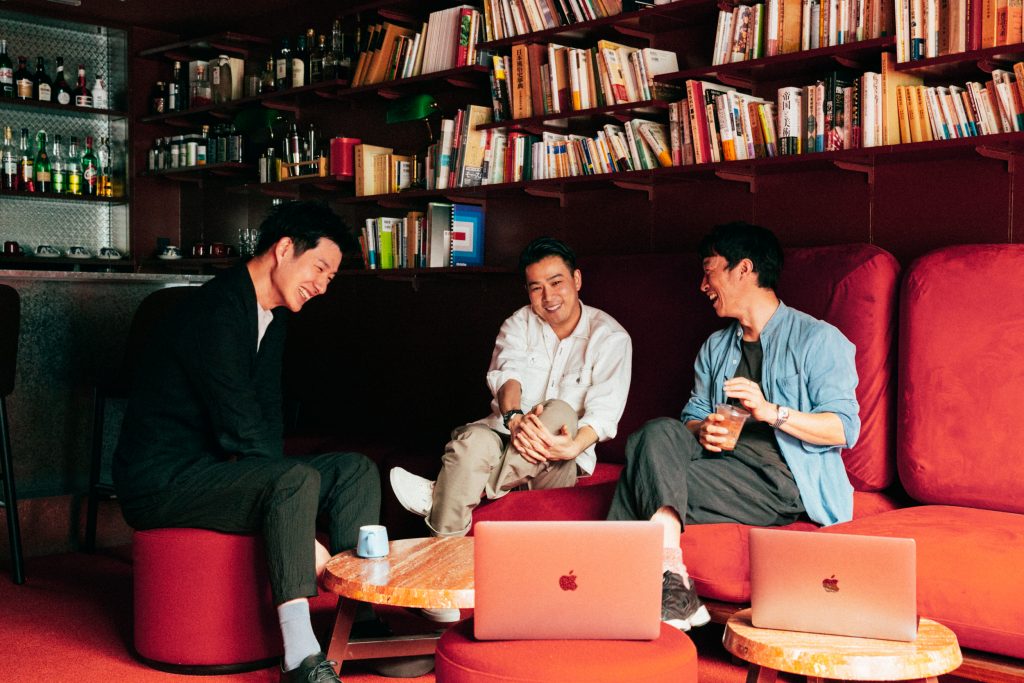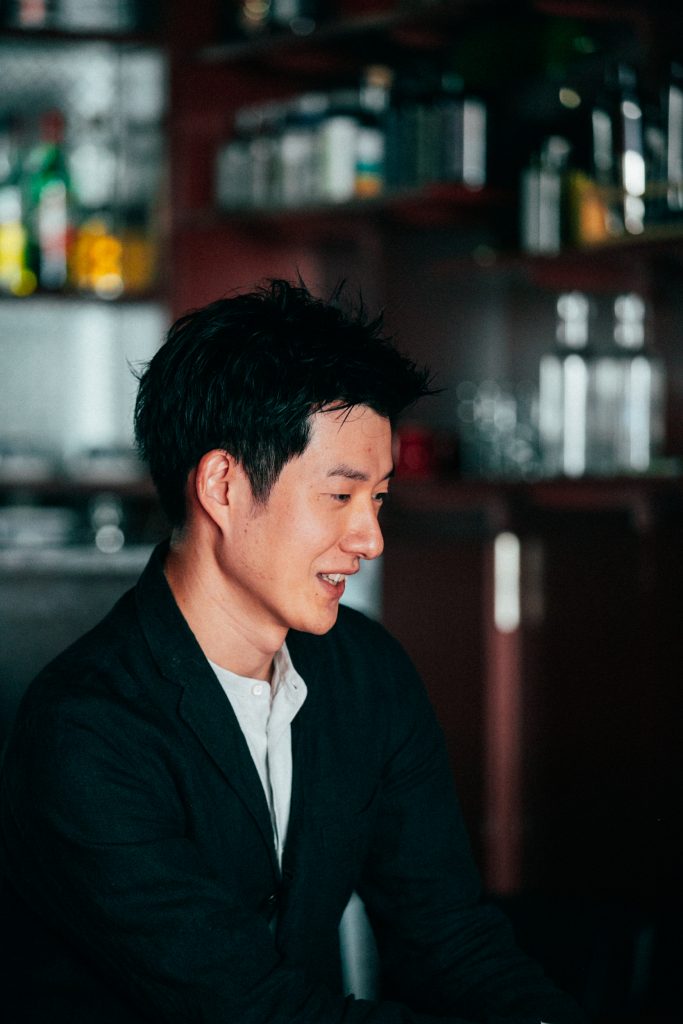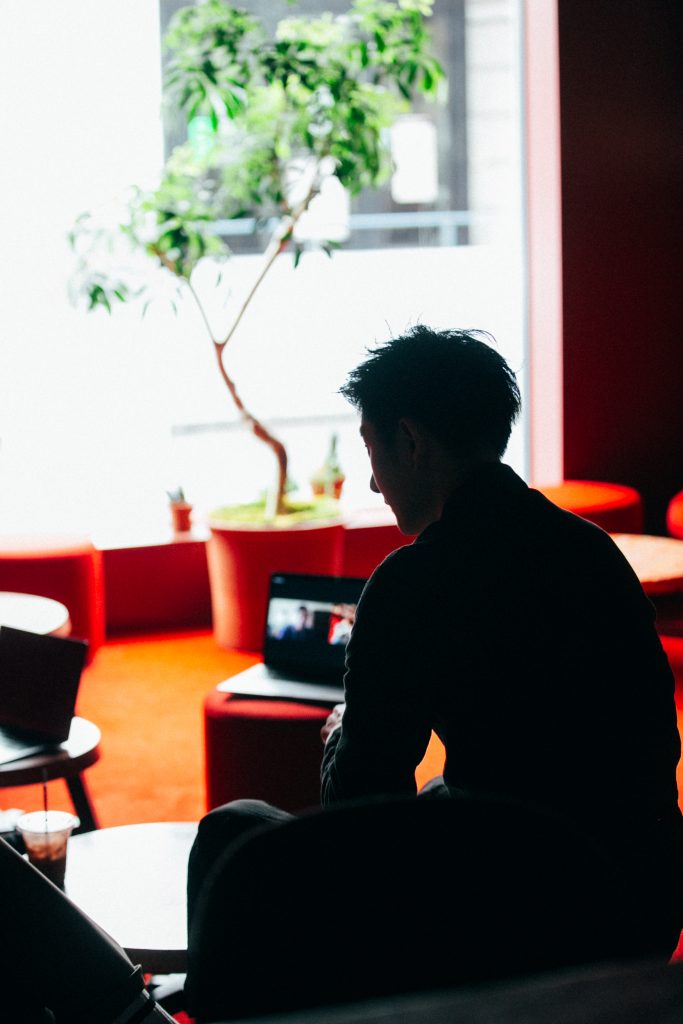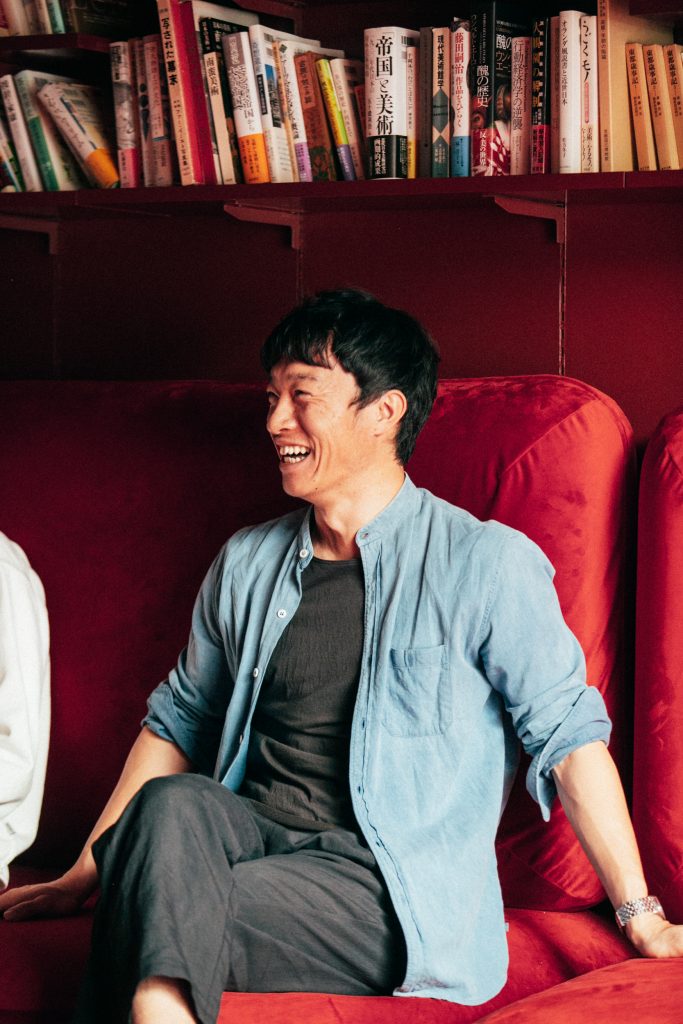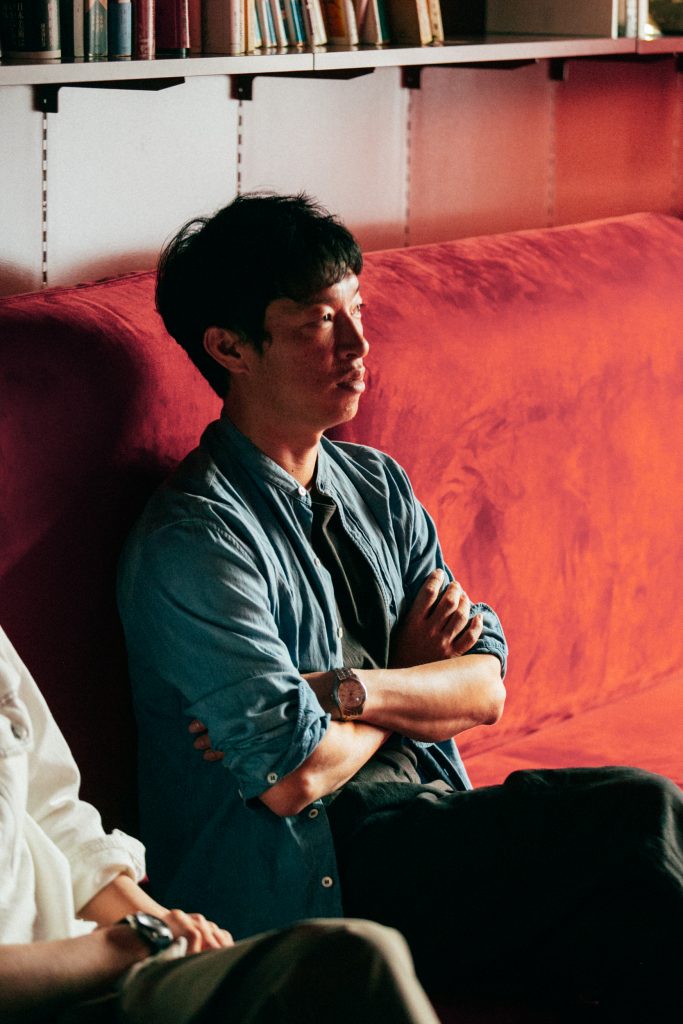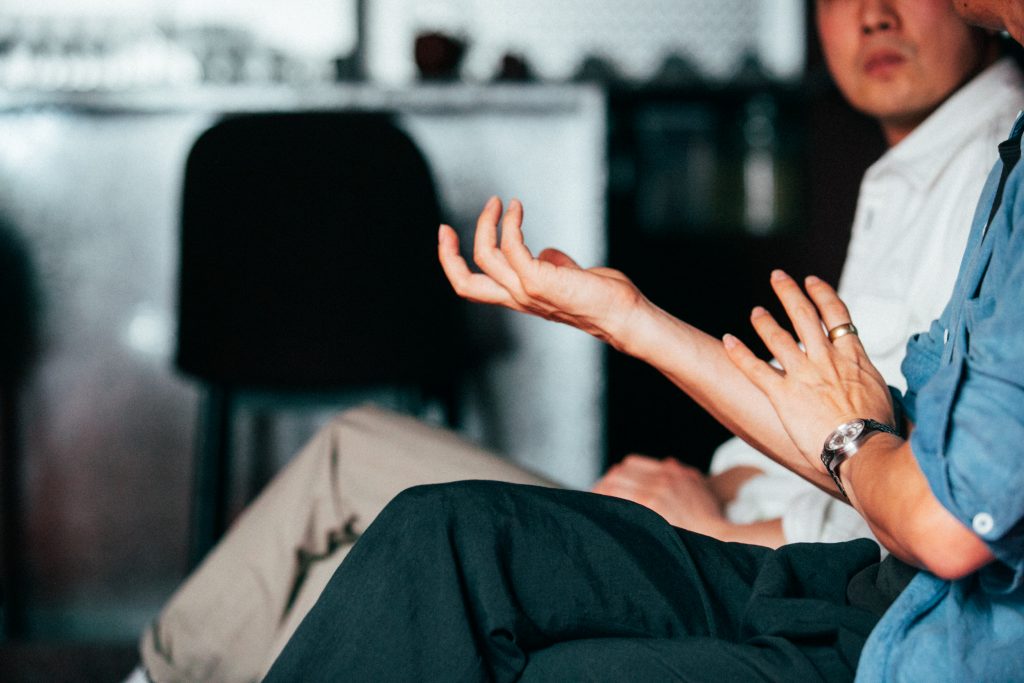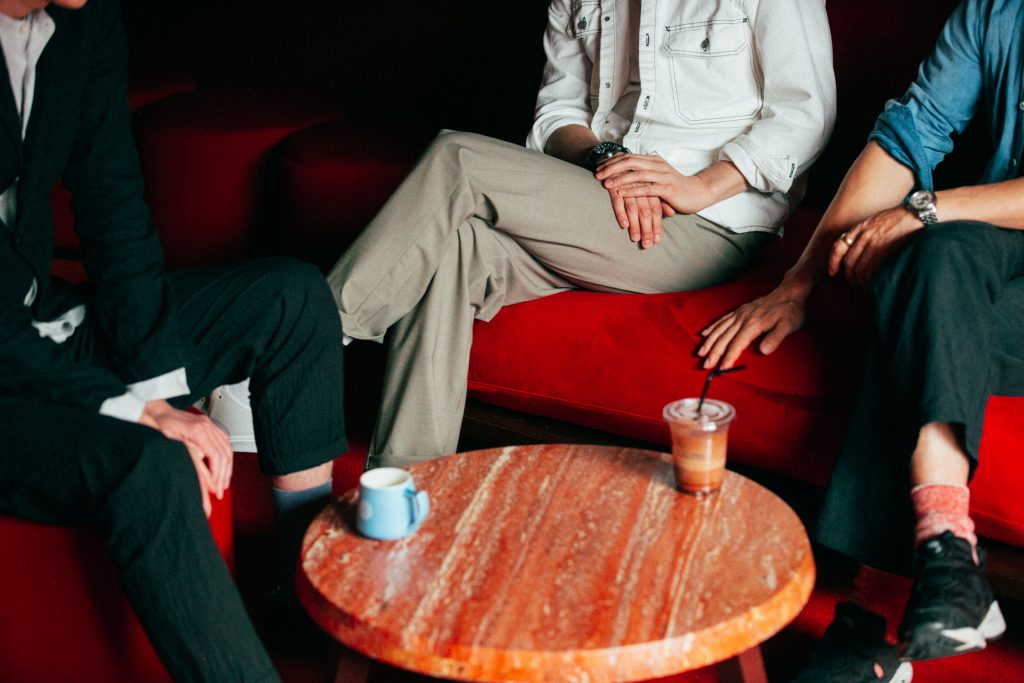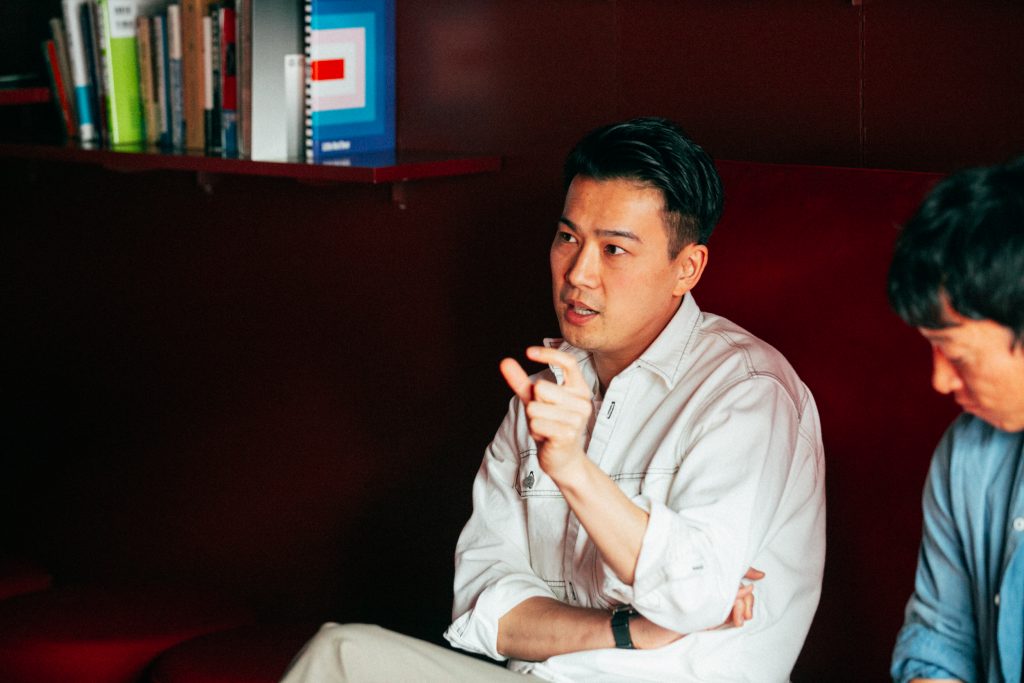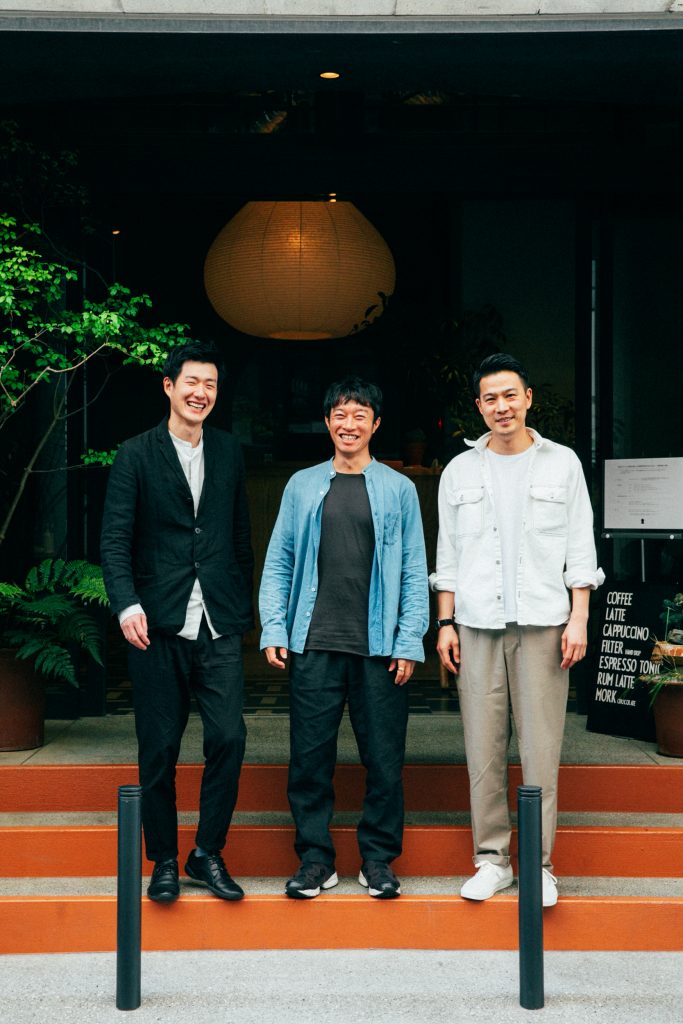


The more local, the more global.
The intersection of city, nature, and people.
● (Akihiro Matsui) Rather than talk about how K5 was created, as we’ve discussed a lot in the past, I’d like to discuss what we want K5 to look like in the future and what role K5 will play in the projects we are currently working on. Did you ever imagine that it would be closed within a month of its opening? And what are your thoughts regarding the situation with Covid?
(Yuta Oka) I think Covid was brought to my attention very early on. In the same way that the U.S. is described as a “melting pot”, K5 was established as a micro complex, with the perspective of creating new value through complex combinations. We wanted to create a space with a collection of businesses and people in the same building. So once the Covid situation became apparent, each store within this complex voiced their own individual opinions early on and through this open communication, I feel that we were able to build a relationship of trust between the complex as a whole and them as an individual.
● (Akihiro Matsui) Are you saying that the relationship between K5 and the respective stores within it has become stronger because of Covid?
(Yuta Oka) We were exposed to a common threat, for the first time we all faced that threat together, and I felt a sense of unity. K5 is a group of people with distinct personalities, but I think we all changed our thinking to make up for each other’s vulnerabilities.
(Hilo Homma) To be frank, I didn’t have much of an opinion about Covid. We live in a world where anything can happen, whether it’s an earthquake or a typhoon. Backpackers’ Japan (*1) has been around for 10 years now, and during that time there was the Lehman Shock and the 2011 earthquake. I think it’s hard to see what’s going to happen in a year or two, but I think the way that K5 was born into this world was, in a way, good.
※1 Backpackers’ Japan
A company that plans and operates hostels, cafes, bars, and dining rooms based on the concept of “creating a place where people can gather, transcending all boundaries.”
● (Akihiro Matsui) What do you mean by ‘the way K5 was born’? The three of us get together regularly to talk about finances, but I think there were times when we were afraid that we might get into a really tough situation. But the experiences we’ve been through have helped us overcome things, don’t you think?
(Hilo Homma) The three of us are good friends and when we got together to plan K5 we were able to invite other friends to work with. Both CKR (*2) and ADX (*3) had fun making it, and in the end, we came up with something good, so we had a strong foundation. And basically, for the most part, it worked out. I think the rest of what occurred is within a certain margin of error. Yuta’s support really helped in overcoming tough situations. In a way, I regret that I left the numerical part to him, but we had each other’s trust. Especially with so many different projects going on at the same time, including the opening of SOIL SETODA (*4), I’m just constantly amazed at how dexterous you are! I’m curious to learn about your ability to balance things and whether it’s integrated or decentralized.
※2 CKR
Claesson Koivisto Rune is a Scandinavian design unit formed in Stockholm in 1995 by Morten Claesson, Eero Koivisto and Ola Rune.
※3 ADX
An architectural team led by Yoshitaro Anzai, whose philosophy is “to connect people with nature.
※4 SOIL SETODA
This is a complex facility created by Insitu, represented by Yuta Oka. It has restaurants, accommodations, and lounge spaces. It is a living room in the city where local people and tourists can casually visit, eat, and work.
● (Akihiro Matsui) If it is just one project, you can imagine it to some extent, but how do you handle various projects at the same time?
(Yuta Oka) It may seem impossible to connect SOIL SETODA and K5, but I think K5 had its own context that led to these various connections. Also, each of them was doing the best they could do at the time. The three of us had distinct strengths and weaknesses, and that mix helped us to launch Kontext; we each had our own role to play.
I think that we, as hotel creators, need to start building a situation where guests from all over the world will be able to visit us in 50 to 100 years time. (Yuta Oka)
● (Akihiro Matsui) What was the concept behind SOIL SETODA?
(Yuta Oka) There are two themes: one is to put Setoda on the global map and the other is localization. I think the reason a city gets global recognition is due to its historical significance, its population, and its economic effect. The town is not only for the people that live there but also for people from all over Japan and the world who come to stay there. I’ve always thought that a hotel should embody the local lifestyle, climate, and culture, and I think K5 fits that bill perfectly.
● (Akihiro Matsui) So you are essentially doing the same thing across the two projects. On the other hand, I think the things that travelers seek out on their trip are also important. When promoting localization, what type of things are you thinking about?
(Yuta Oka) As a hotel, we want to focus on digging deeper into the area rather than approaching the people we want to attract. In the end, what we want is for people to travel with their families and friends in search of things they haven’t seen yet in the world, and we want the world to be a place where people have a reason to travel. On the other hand, climate change has caused environmental movements in Sweden and other parts of the world, and traveling itself has taken on a slightly negative image. We need to address these conflicting points, otherwise, people will become fearful of traveling due to its effects on the environment.
Therefore, in terms of localization, I think that we, as hotel creators, need to start building a situation where guests from all over the world will be able to visit us in 50 to 100 years time.
● (Akihiro Matsui) What kind of actions do you think we will need to take now to achieve this?
(Yuta Oka) We need to increase the number of places where farmers, craftsmen, artists, and consumers can have local output. And we need to build a system that will eventually lead to input for those who are active locally. We will promote this in the community and uphold our responsibility as hotel owners by pushing for the use of localized energy and food, with a tentative goal of 80%. We will use local materials and fewer amounts of wood while purchasing materials for the hotel that use more efficient technological processes, such as pre-cutting, and 3D printers. I think it’s similar to cooking, where local ingredients are optimally prepared and served in the most delicious way, yet with a global perspective and understanding. If these things become standard, I think we will be better off in 50 years time.
The more we travel, the more nature circulates, and the more people's sensibilities are repainted. I believe that there is a future where people's activities will lead to recovery. (Hilo Homma)
● (Akihiro Matsui) I think it’s nonsense to think in terms of pre-Covid and post-Covid, but as I mentioned earlier about climate change, some people are wondering about the environmental impact of air travel. What do you think will be the impact of K5?
(Hilo Homma) Similar to SANU (*5), the design concept is “returning to nature.” K5 is located near the Tokyo Stock Exchange, and this juxtaposition highlights our goal: that Tokyo will not become more metropolitan, but will actually return to a more green and natural environment. It would be interesting to see this happen from the middle of Kabutocho in the financial district, starting with the hotel. However, the way to bring nature into the city is not only to increase the number of plants that can grow naturally in the city, like buildings in Singapore, but rather it is more about sensitivity. In other words, it’s a matter of people’s perception, and I think it’s important for people to feel good about having greenery in Tokyo. SANU is the same in the sense that it brings nature into daily life. If K5 is an attempt to realize this in the context of design, then it is also an attempt to bring people in the city into nature. In this way, sensitivity is cultivated and a sense of protecting nature grows. Rather than focusing on the threats of nature, our goal has always been to bring its light to as many people as possible by continuing to communicate its richness and beauty.
※5 SANU
SANU is a lifestyle brand that aims to realize a society where people and nature coexist in harmony. Developing a second-home subscription business in a rich natural environment.
● (Akihiro Matsui) How do you feel about the relationship between cities and nature, especially given your experience traveling?
(Hilo Homma) I think a lot of resorts have become places where people go to release the stress they’ve built up in the city, and I don’t think they’ve thought about the future of those places. Because you only go there once. But I thought it would be better to have travel as a part of everyday life, not as a medication to relieve accumulated stress. For example, instead of traveling for 10 hours overseas, you can go to the sea or mountains in an hour. By going there repeatedly, you can see nature and integrate it into your life. If you’re visiting Hawaii for the first time you’ll probably say how beautiful the beach is. But if you’ve lived there for a long time you’ll probably think it’s becoming more and more polluted. If you are able to observe something from a fixed point you can change your actions, and you can repeat them over time. That’s why I think, as an alternative to overseas travel, we should go into nature and destinations that are closer to home and on a more frequent basis.
● (Akihiro Matsui) Not only in travel but also in clothing and anything else, there is ultimately negative damage from operating on a capitalist basis, isn’t there? What do you think about that?
(Hilo Homma) The bee’s job is to collect pollen from flowers to make nectar. But this activity itself plays a part in enriching nature. In the past, humans also enriched the mountains by entering them. Cutting trees and picking plants used to be part of the cycle. However, excessive capitalism has upset the wheels of this cycle, and in the end, it has become a vicious cycle that is destroying nature. The problem is that the supply chain that supports human life has become so bloated that the background has become invisible. The more we travel, the more nature circulates, and the more people’s sensibilities are repainted. I believe that there is a future where people’s activities will lead to recovery.
● (Akihiro Matsui) When I look back at the projects that each of us has been involved in, whether it be K5, localization, or repeatedly visiting the same places, I see a consistent direction of bridging the gap between people living in cities and nature.
(Yuta Oka) SOIL SETODA aims to return the original circulation between nature and people. By placing heavier importance on local sourcing, we want to improve the local economy. If you want to change the world, you can either be a politician, bureaucrat, or prime minister, or you can work as an extension of the food, clothing, and housing industries, as we are doing now.
● (Akihiro Matsui) It’s been a year since K5 was established, and it’s not like we’ve been featured heavily in the press or anything, but it feels like the amount of coffee shops in the area is steadily increasing. With changes occurring in the people who visit the city, what is it that you are looking for in Kabutocho now? When I look at a town, I tend to view it from a macro perspective, from the context of the smallest unit, that being the “people” creating the town. Do the two of you have a different perspective?
(Hilo Homma) Personally, I want it to be a place where we can hang out until we become old men, a place where the three of us can get together and have fun drinking. But what will happen when this is sublimated as a starting point in the city? In the past, we had to work within the confines of our birthplace, but now, we can live where we want to live, and I think we can get away from those confines and show more and more of the town’s colors. In this sense, Kabutocho is a place of good friends who have come together to create a town. However, if the town can be open-minded and not introverted, I think it will take on a new form. This happened accidentally with Nui (*6) in Kuramae, but the interesting thing about K5 is that it was intentional.
※6 Nui
Backpackers’ Japan’s hostel and bar lounge in Kuramae, Tokyo.
(Yuta Oka) Perhaps there is still a sense of tension in Kabutocho, but a town should be easy to enter. I think it would be great if the city became a place where people could pass through in all directions. I want to think about what kind of town the people of Kabutocho want to live in and discover a style through that. Currently I live in Setoda, but I would like to live in Kabutocho and observe the city from a fixed point of view.
I don't think it's right to complete everything when creating a town, but rather to draw auxiliary lines so that the outline gradually emerges. (Akihiro Matsui)
● (Akihiro Matsui) I don’t think it’s right to complete everything when creating a town, but rather to draw auxiliary lines so that the outline gradually emerges. Hilo, do you have any interesting combinations of elements that make up a town?
(Hilo Homma) Vegetables and skateboards! There are almost no places to skate in Tokyo. There are lots of parks and plazas around Kabutocho, and skating is the best part of street culture, and farmers are the ones who build our economy. Wouldn’t it be really interesting to combine these two in this financial district? People skate and buy vegetables. I think it would be cool to see something like that happen under the stock exchange.
● (Akihiro Matsui) Now for the last question: is there anyone you would love to see stay at K5? In case you’re wondering, I’d like Brad Pitt to come (laughs).
(Hilo Homma) Hahahaha! That’s nice. I’d have to go with the two of you: Matsui-san and Oka-san.
(Yuta Oka) I would like the people of Setoda to come and visit. When I think about the sensibility part, I think we need to move information and people. I want people to see K5 when they come to visit Tokyo. These days, I think we live in a world where we can move freely, so it’s good to enjoy the feeling of moving back and forth between cities, assuming that your interests and tastes are different in each region.
Therefore, I think it will become more and more interesting as the gap in values that each region aims for, or in other words, the characteristics of each region, is sharpened. But yes, to have Brad Pitt would be awesome!
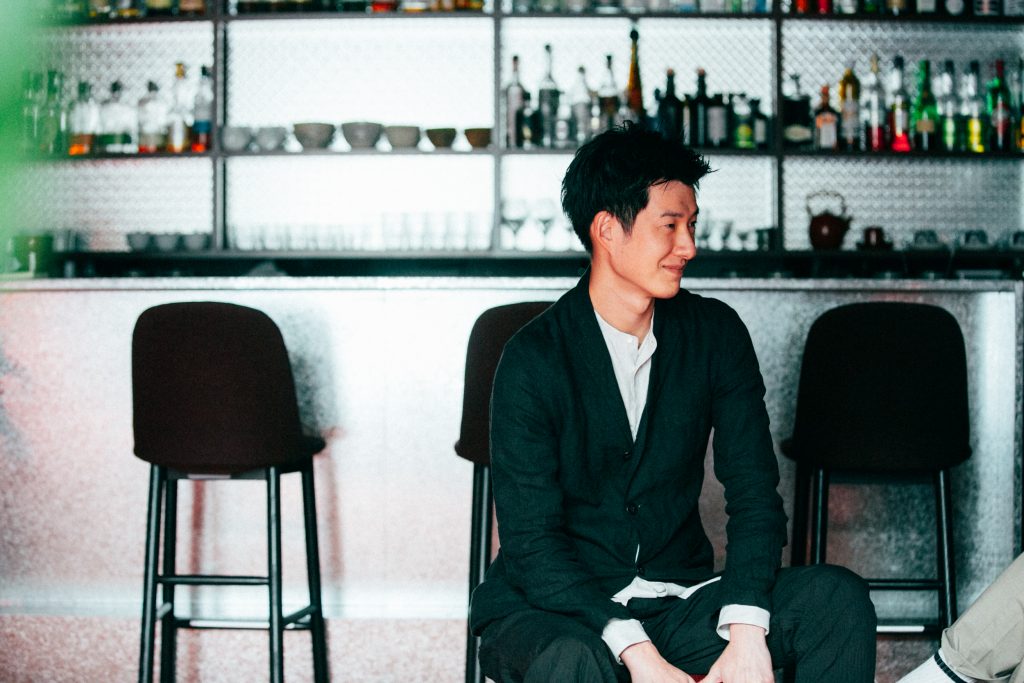
Yuta Oka
After graduating from Waseda University, he worked for a hotel and real estate investment company at Starwood Capital Group’s Tokyo and San Francisco offices. He worked in corporate planning at Aman Resorts and Six Senses Hotels Resorts Spas before founding InSitu and Nalu Developments in 2016.
InSitu is an international team with offices in Tokyo and Singapore that provides integrated hotel planning, development, and management services. InSitu has opened small hotels in Bali, Italy, and Japan. They also conduct agriculture and area management. He is responsible for the planning, development, and operation of K5 in Nihonbashi Kabutocho and Soil Setoda in Setoda, Onomichi.
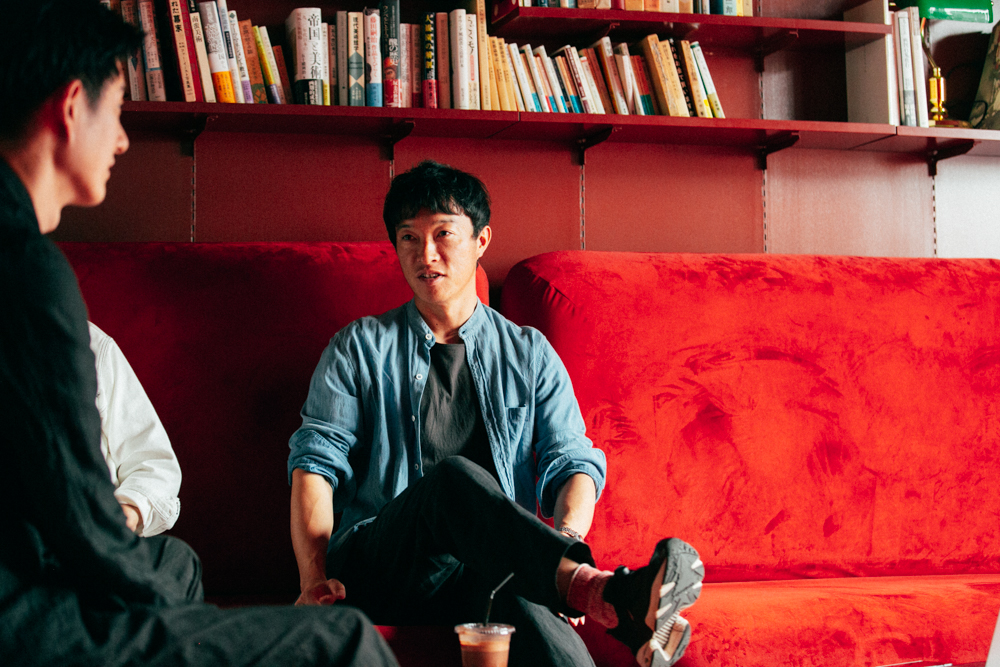
Hilo Homma
In 2010, he founded Backpackers’ Japan, which operates guesthouses and hostels, with the philosophy of “creating a place where people can gather, transcending all boundaries”. In the same year, he opened the guesthouse “toco”, built in a renovated old house located in Iriya, Tokyo. Since then, he has produced and managed Nui. HOSTEL & BAR LOUNGE in Kuramae, Tokyo, Len in Kawaramachi, Kyoto, CITAN in Nihonbashi, Tokyo, and K5 in Nihonbashi, Tokyo. SANU is a lifestyle brand with the slogan “Live with nature.” Born in Aizuwakamatsu City, Fukushima Prefecture. Surfing and snowboarding are his life’s work.

Akihiro Matsui
President of Media Surf Communications, who is responsible for curating, branding, and attraction for the Nihonbashi Kabutocho and Kayabacho Revitalization Project. He is the editor-in-chief of Kontext.
Text : Jun Kuramoto
Photo : Naoto Date
Interview : Akihiro Matsui
